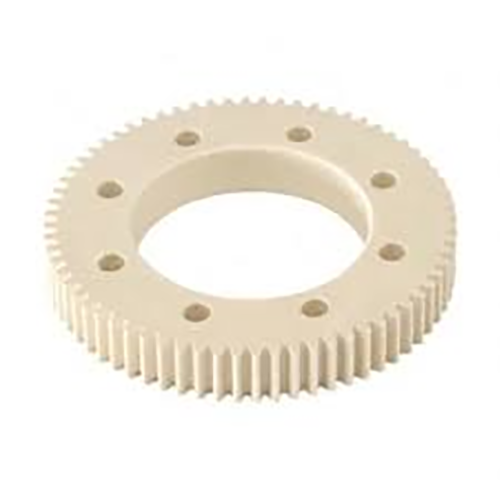
Realizing precise finish on a turned or milled piece is critical.
- Blueprint callouts define exact texture requirements for manufactured pieces
- Technical callouts use Ra, a measure of average irregularity, to quantify finish
- Decoding surface notes is important for ensuring components achieve required performance
- Designated finish alters fluid film formation, friction levels, and durability outcomes
- Proper decoding of specifications is critical to deliver the expected finish
CNC Machining and Precision Engineering

CNC-driven fabrication functions as a modern manufacturing method employing digital instructions the machinery forms elaborate parts with exactness.
- This process enables the creation of high-quality parts from a wide range of materials
- CNC adaptability suits industries including aerospace and automotive sectors
- CNC processes produce uniform parts with high repeatability over runs
From prototyping to mass production CNC machining plays a pivotal role in shaping modern manufacturing
Interpreting CNC Specifications
Parsing spec sheets may feel challenging at initial inspection
Even so practical familiarity and a systematic plan enable decoding machine specs
Set out by finding key metrics: spindle speed, feed settings, positional accuracy, work envelope, controller
Every listed attribute influences the equipment’s operational capacity.
Illustratively, greater spindle rpm aligns with softer workpieces; increased feed raises manufacturing pace.
Grasping those connections helps choose machinery aligned with your needs
It’s wise to study manufacturer documentation comprehensively.
Manufacturer docs typically supply key details and decode technical phrasing
Comprehensive Guide to CNC Machinery
Numerical-controlled machines are computer-guided systems for accurate automated manufacturing across substrates They operate by interpreting digital instructions called G-code to control cutting tools or other actuators.
- Representative CNC types cover milling tools, turning machines, routers, plasma cutters
- Fabrication techniques operate on ferrous, nonferrous, polymeric, and composite materials
- Likewise CNC solutions enable fast prototyping and small-lot production for enterprises and research labs
CNC Basics and Explanations
They manifest coupling of mechanical fidelity and complex software governance These versatile tools utilize computer programming to automatically manufacture a wide range of parts from simple components to complex assemblies Essential concept transposes digital designs into manufactured reality.
- Computer Numerical Control machining
- Digital-to-physical process
It uses accurate motion sequences commanded by the controller Shop technicians tune machining parameters, supervise production, and certify product accuracy.
The Role of Surface Finish in CNC Machining
Meeting set surface quality in CNC work is significant It modifies operational efficiency and cosmetic finish Material selection, cutting strategy, and finishing steps all influence final texture.
High-quality surfaces strengthen durability while rough textures may reduce efficacy Code-driven machining enables selective tooling and techniques to attain required textures.
- For instance varying cutting insert shapes |ceramic cutters|tool speed tuning to deliver finish
- Supplementary finishing like polishing or abrasive grinding enhances surface
Appreciating the link between settings and surface quality helps achieve ideal finishes.
An Introduction to CNC Machine Operation
It constitutes a high-precision manufacturing approach using programmed machine tools to form parts from many materials They interpret digital toolpaths to carve detailed designs reliably Understanding machine control, programming, and tooling choices is crucial for effective machining
Applications of CNC machining are incredibly diverse spanning numerous industries such as aerospace automotive manufacturing From aircraft parts to precision plastic molds, CNC creates complex high-quality items
Surface Finish Notation for Machined Components
Accurate finish definition matters when machining parts with CNC It helps confirm that the product aligns with performance and cosmetic needs Callouts commonly use the roughness average (Ra) system to denote surface finish Given in microns or thousandths of an inch, the figure measures average surface peaks and valleys.
Weigh required surface smoothness against intended use when defining callouts

Example: polished finishes often suit parts needing close tolerances and exact mating
Rugged finishes sometimes serve parts that need enhanced traction or grip
Employ an unambiguous finish note on drawings to specify surface expectations Provide the roughness average and detail supplemental processes or treatments needed.
Remember that effective surface finish callouts are key to achieving a successful manufacturing outcome
CNC Machine Types and Their Functions
There exists a diverse field of CNC machines built to serve many operational purposes They leverage CAD/CAM designs to instruct cutters for accurate and efficient fabrication.
- Milling machines are renowned for their ability to remove material from a workpiece shaping it into complex geometries
- Lathes excel at producing round parts such as shafts rods and bushings
- Waterjet tools cut ceramics composites and metals with no heat-affected zone
Decision factors include the part’s material, feature complexity, and tolerance specifications Unique machine capabilities support varied industry needs such as automotive, aerospace, and medical.
Attaining Top-tier Surface Finish Through CNC
Producing a high-quality finish matters across manufacturing and CNC approaches provide precise control to reach it By combining feed optimization spindle settings and cutter geometry selection operators reduce patterning and improve finish Plus durable cutting materials and appropriate coolant control boost finish quality Well-chosen cutting tactics plus careful setup empower manufacture of parts with exceptional surfaces.
Realizing Finish through CNC Code
Mastering surface finish during CNC programming is crucial for achieving desired quality outcomes Combining feed, speed, and tool form strongly affects surface pattern and roughness Meticulous parameter tuning together with suitable coolant use promotes smoother finishes.
- Additionally routine tool checks and upkeep maintain consistent finish quality Besides that systematic tool upkeep and monitoring ensure sustained surface quality In addition machine finishing symbols periodic tool servicing and checks secure consistent surface quality
- To optimize surface finish programmers should consider factors like material type desired surface roughness and the application requirements
- Path simulation offers insights to adjust cutting settings and reduce defects
- Moreover scheduled tool maintenance and inspection preserve surface performance
